Weapons - Northern Europe - Fotogalerie - Sold antiquities
Archive of sold antiquities
All artefacts sold in our gallery are fully documented in our online archive and database. Being a specialist ancient art dealer, preserving also the more recent history of each and every piece sold in our shop is at our heart. That is particularly useful for artefacts that changed owners in the meantime. Information that may have been lost in the process can be easily restored from our archives. Please do not hesitate to contact us if you need further information about ancient items that have been sold in our gallery. We can help you with reconstructing the history of ownership for those items. All information about our customers will be kept confidential, of course.-
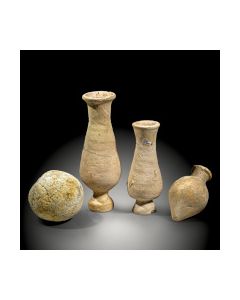 Three Roman pottery amphora plugs and one stone projectile from the Rhineland
Three Roman pottery amphora plugs and one stone projectile from the RhinelandFound 1966 till 1981 near the Roman city of Novaesium, today's Neuss in Germany. Novaesium was an early Roman foundation and with this is one of the oldest cities in Germany.
Price: on request Iron spear head worth the exhibition in a museum
Iron spear head worth the exhibition in a museumVery nice patina, smooth surface, rare degree of preservation for an iron object.
Price: on request Neolithic flint dagger from Denmark
Neolithic flint dagger from DenmarkDouble-edged blade and flat shaft made of beautiful flintstone. A status symbol from the transitional period between Late Neolithic and Early Bronze Age.
Price: on request Sword from the European Bronze Age
Sword from the European Bronze AgeWonderfully preserved bronze weapon from the Late Bronze Age around 1200 BC. Of the Reutlingen type, made in the region of today's Germany or surrounding countries.
Price: on request Iron Age spearhead from Sweden
Iron Age spearhead from SwedenWell-preserved iron weapon, a find from the Swedish province of Värmland. Acquired in 1894 into the collection of the Bally-Prior Museum.
Price: on request Roman iron pilum (javelin) head from the Rhineland
Roman iron pilum (javelin) head from the RhinelandFound near the Roman city of Novaesium, today's Neuss in Germany, an early Roman foundation and with this one of the oldest cities in Germany.
Price: on request Roman iron spear head from the Rhineland
Roman iron spear head from the RhinelandFound near the Roman city of Novaesium, today's Neuss in Germany, an early Roman foundation and with this one of the oldest cities in Germany.
Price: on request Roman clay ball
Roman clay ballMassive clay sphere, ammunition or a pistill. A find from the Roman city of Novaesium, today's Neuss in Germany.
Price: on request Celtic spear head - found 1982 near Frome, Sommerset, UK
Celtic spear head - found 1982 near Frome, Sommerset, UKIron, about 2nd century BC - 1st century AD. With export permit by the Arts Council of England.
Price: on request Scythian short sword
Scythian short swordThe so-called acinaces is a typical weapon of the Scythians. Well preserved piece from the 7th to 5th centuries BC.
Price: on request Celtic spear head - found in 1970s near Radstock, UK
Celtic spear head - found in 1970s near Radstock, UKIron, about 2nd century BC - 1st century AD. With export permit by the Arts Council of England.
Price: on request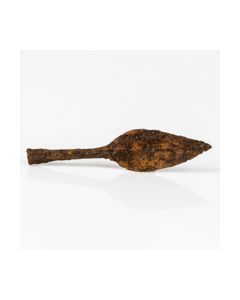 Celtic spear head - found in 1970s near Warminster, UK
Celtic spear head - found in 1970s near Warminster, UKMade of iron, about 1st century BC - 1st century AD. With export permit by the Arts Council of England.
Price: on request Flint knife from Northern Germany
Flint knife from Northern GermanyFlat two-edged stone blade from the Dagger Period of Northern Europe.
Price: on request Small axe head from the New Stone Age
Small axe head from the New Stone AgeCompact stone axe from the 3rd Millenium BC. Found on the Danish island of Moen.
Price: on request Dagger blade made of beautiful flint
Dagger blade made of beautiful flintThe finely worked long blade was found in Luetzow in Northern Germany. The artefact was made towards the end of the Neolithic.
Price: on request Scandinavian flint dagger
Scandinavian flint daggerNicely worked flint dagger from the transitional period between Late Neolithic and Early Bronze Age. Jungshoved on the Danish Island of Moen was the find spot.
Price: on request Neolithic dagger
Neolithic daggerNicely worked flint dagger of type III. Sprove on the Danish Island of Moen was the find spot. 1700 to 1500 BC.
Price: on request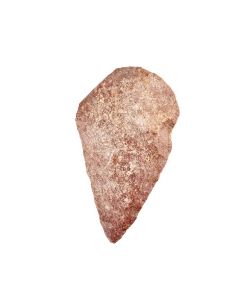 Paleolithic hand axe
Paleolithic hand axeThe universal tool of the older Stone age. It could be used as a borer or a cutter. Approx. 500,000 to 200,000 BC.
Price: on request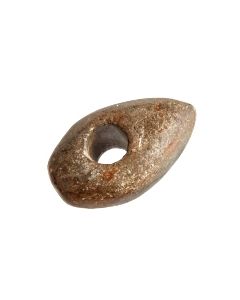 Small battle axe of the Single Grave culture
Small battle axe of the Single Grave cultureThe axe head from the younger Stone Age has a compact shape. Axes that have clearly been used as weapons are rare. Most axe types have probably served peaceful purposes.
Price: on request Massive Bronze Age spear head, possibly celtic
Massive Bronze Age spear head, possibly celticPerfectly preserved, large piece with beautiful patina. From an old German collection.
Price: on request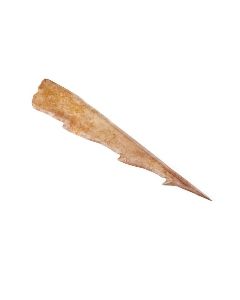 Harpoon of the Maglemosian culture
Harpoon of the Maglemosian cultureFine craftsmanship hunting weapon. Important evidence of the beginnings of fishing in Northern Europe. Mesolithic, 9000 to 6500 BC.
Price: on request Spear head from famous Guttmann collection
Spear head from famous Guttmann collectionMassive, perfectly preserved piece, beautiful patina. Inventory number "AG 167c" from famous Axel Guttmann collection in shaft.
Price: on request Spear head from famous Guttmann collection
Spear head from famous Guttmann collectionMassive, perfectly preserved piece, beautiful patina. Inventory number "AG 167c" from famous Axel Guttmann collection in shaft.
Price: on request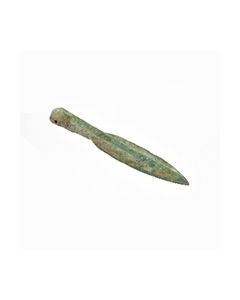 Spear head from famous Guttmann collection
Spear head from famous Guttmann collectionMassive, perfectly preserved piece, beautiful patina. Inventory number "AG 167c" from famous Axel Guttmann collection in shaft.
Price: on request Spear head from famous Guttmann collection
Spear head from famous Guttmann collectionMassive, perfectly preserved piece, beautiful patina. Inventory number "AG 167c" from famous Axel Guttmann collection in shaft.
Price: on request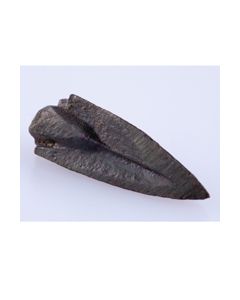 Römisch-Skythische Pfeilspize
Römisch-Skythische PfeilspizeDreiflüglige Pfeilspitze in perfekter Erhaltung. Fundort: Niedergermanien.
Price: on request Römische Lanzenspitze
Römische LanzenspitzeMassives und perfekt erhaltenes Exemplar, sehr selten. Fundort: CUT (Fürstenberg),
Price: on request Römisch-Skythische Pfeilspize
Römisch-Skythische PfeilspizeDreiflüglige Pfeilspitze in perfekter Erhaltung. Fundort: Niedergermanien.
Price: on request Zwei römische Pfeilspitzen
Zwei römische PfeilspitzenLanggezogene Pfeilspitzen aus Eisen/Bronze, perfekte Erhaltung. Fundort: Niedergermanien.
Price: on request Kleiner Faustkeil, Homo Neanderthalensis
Kleiner Faustkeil, Homo NeanderthalensisKleiner Faustkeil oder Hammer, mittleres Paläolithikum. Bearbeitung durch Neandertaler, 60000 v. Chr. bis 40000 v. Chr.
Price: on request Axtklinge aus Flintstein
Axtklinge aus FlintsteinNordeuropäisches Neolithikum, Zeit der Trichterbecher-Kultur. Klinge einer Axt mit scharfen Kanten.
Price: on request Speerspitze aus der Dolchzeit
Speerspitze aus der DolchzeitDolch oder Speerspitze mit fein meisterlich Kanten. Endphase des nordeuropäischen Neolithikums.
Price: on request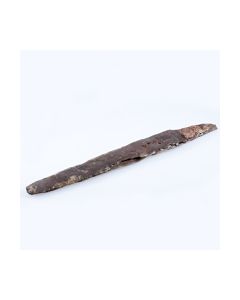
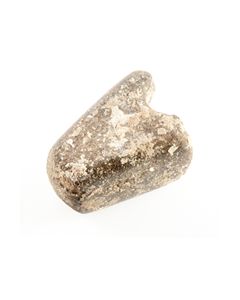 Fragment eines neolithischen Axtkopfes
Fragment eines neolithischen AxtkopfesFragment vom Kopf einer Arbeitsaxt oder Streitaxt der Jungsteinzeit aus Süddeutschland. Zur Veranschaulichung der Arbeitstechniken, z.B. für eine Lehrsammlung.
Price: on request Fragment eines neolithischen Axtkopfes
Fragment eines neolithischen AxtkopfesFragment vom Kopf einer Arbeitsaxt oder Streitaxt der Jungsteinzeit aus Süddeutschland. Zur Veranschaulichung der Arbeitstechniken, z.B. für eine Lehrsammlung.
Price: on request Pfeilspitze, Querschneider aus dem Spätmesolithikum
Pfeilspitze, Querschneider aus dem SpätmesolithikumPfeilschneide in Trapezform. Fund aus Ringe, Dänemark. Ertebølle-Kultur. 5100 v. Chr. bis 4100 v. Chr.
Price: on request

